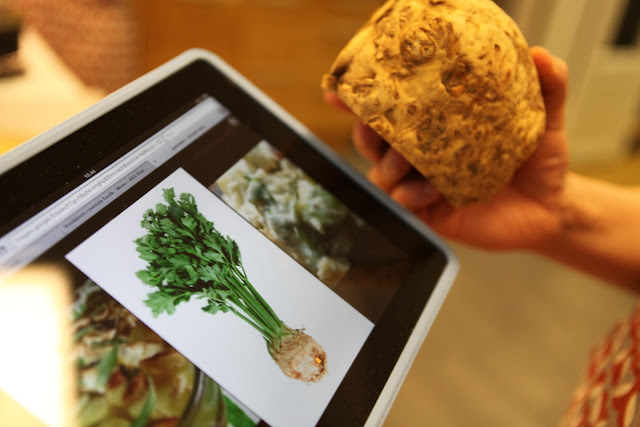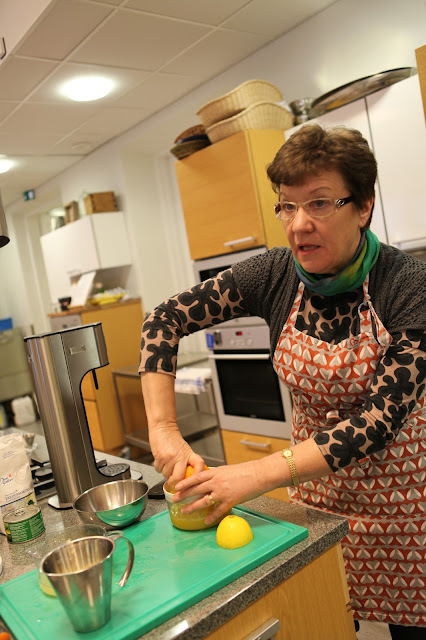Here in the kitchen, at Lapinlahdenkatu 3, Helsinki, the home economics and chemistry teachers are working together with the LUMA Centre to build curriculum. The goal is to create lessons about starches, proteins, emulsions, pH, salts, crystals and foams so that these topics can be studied concurrently in the home economics and chemistry classes.
Lisa Rautiainen and Outi Haatainen are working on making chocolate pralines...

and they're making the pralines from three types of chocolate.

Tempering is a way to control the crystallization of chocolate so that you get smooth, nicely-textured chocolate - not chocolate that is brittle or filled with white patches.
The centers of the pralines had a delicate orange taste - don't you just want to taste one? or more?
Mari Hannula and Kirsi Vakkilainen are discussing with Anu Hopia how starch granules change their structure based upon how they are cooked. Maiju Tuomisto is researching starch granules on the Internet to share with her colleagues.

In the experiment, the teachers tested four cooking methods for the starch. In the bowl on the left, the starch was put into hot water and not stirred. In the second bowl from the left, the starch was put into cold water and not stirred. In the third bowl from the left, the starch was put into the cold water and heated until bubbles started to form. In the bowl on the far right, the starch was put into cold water, stirred, and after the water boiled it was cooked for another five minutes.
The teachers took a sampling of the starch, dyed it with iodine, and looked at it under a microscope to observe the shape of the starch granules.
They were able to compare the shape of the starch granules with examples found on the Internet.
Arja Ollila and Katri Mäkelä created fruit-flavored drinks.
They prepared the flavors from fresh fruit juices and carbonated the juice using the soda machine.
Each drink had a different level of acidity (pH).
Katri Leinonen and Mikko Metso practiced the method of caramelization and used the carmels to make muffins.
Sari Slawuta and Heli Molturi created different flavored salts and fried up some potato slices (and celeriac for fun) to dip into the salts.

Celeriac
Vegetable soup was one of the methods for preparing the salts, but they also baked vegetables, used chills, and ... I wish I took notes on the other types of salts. Sorry. But they were yummy!
Slices of celeriac
Soaking the celeriac before frying

Prepared salts
The remnants of the feast
Aila Vuorikoski and Riikka Sirén creating multi-layered drinks to demonstrate the concept of density.
She's showing you different fruit juices with different densities. The liquid on the bottom is more dense than the liquid on the top. I think the layer on the bottom is a berry juice and the one on top is apple juice.
Adding the foamy, less dense substance to the top of the drink. The drink in the middle has Sprite on the top.

Colleagues collaborating. This group will meet one more time in September; they hope to publish a book with their curriculum project.


























Reminds me of a holiday project we did in high school chemistry - making peanut brittle with beakers and bunsen burners.
ReplyDeleteIf our science classes were more like this, kids would be knocking down the doors to get into STEM courses.